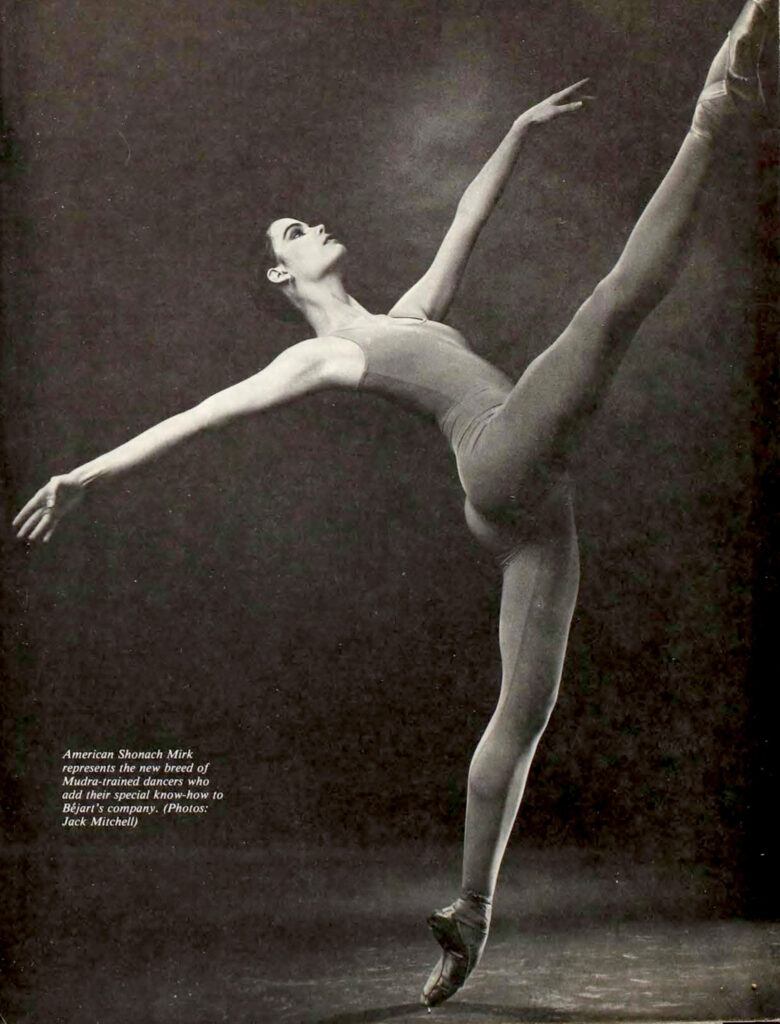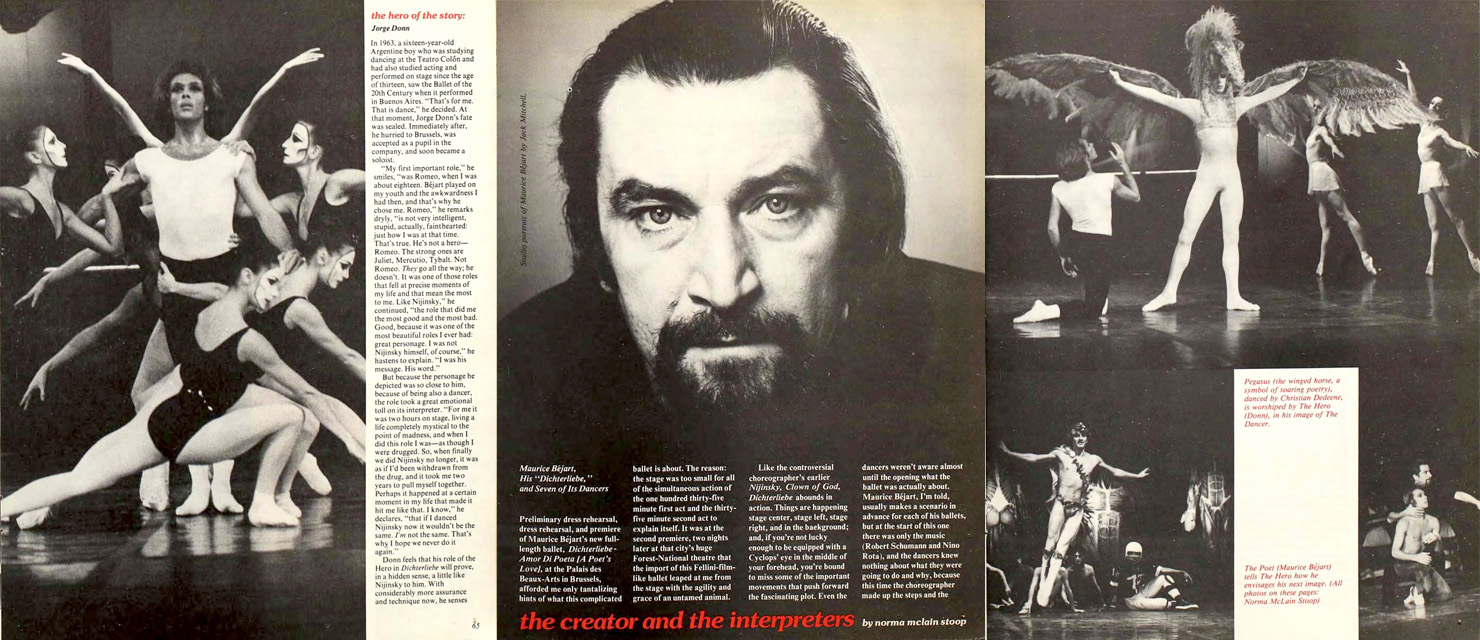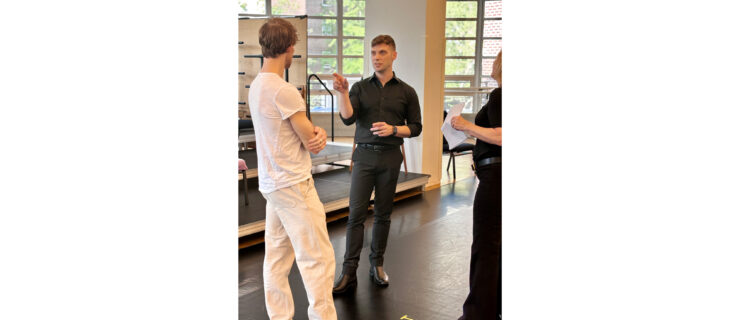TBT: Maurice Béjart’s “Difficult” Ballet Dichterliebe
In the March 1979 issue of Dance Magazine, associate editor Norma McLain Stoop spoke with choreographer Maurice Béjart and seven of the dancers who created roles in his evening-length Dichterliebe – Amor Di Poeta, which had debuted in Brussels in December and would appear in New York City that month as part of Ballet of the 20th Century’s season at the Minskoff Theatre. “If you’re not lucky enough to be equipped with a Cyclops’ eye in the middle of your forehead,” Stoop wrote, “you’re bound to miss some of the important movements that push forward the fascinating plot. Even the dancers weren’t aware almost until the opening what the ballet was actually about.”

Béjart, who played the role of The Poet (who directs the characters, who largely rebel against him), said of it, “It’s a difficult ballet because it’s not story. It’s visions, and sometimes so many visions happen in so little time in so many different places on the stage that you cannot absorb all of them at one sitting….It’s constructed like a movie, more or less, and like a symphony….The dream is coming and, more and more the dream is destroying the structure of classical music and classical ballet, as though dream and the subconscious are stronger than the rigid structure of ballet, and they destroy it….But the real story of the ballet is the fight between the creator and the interpreter. When it starts, [dancer Jorge] Donn and I are both sitting, like fighters, in the ring which is made from broken classical ballet barres. It’s a fight.”
By Stoop’s estimation, in addition to Donn as the Hero (who “is many personalities, including a rock singer and a clown and, at the end, becomes born again as the Poet”), the characters in that “fight” also included a young girl, a wife, novelist George Sand, Dionysius, Zarathustra, Pegasus, an eagle, a serpent, three Muses, a group of rugby players, and some motorcyclists. And, Stoop concluded the list, “There’s a great deal of death around, too.”




